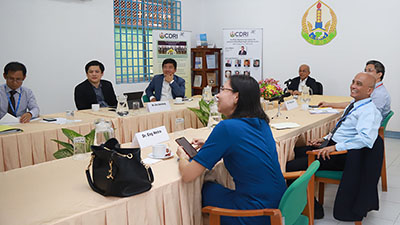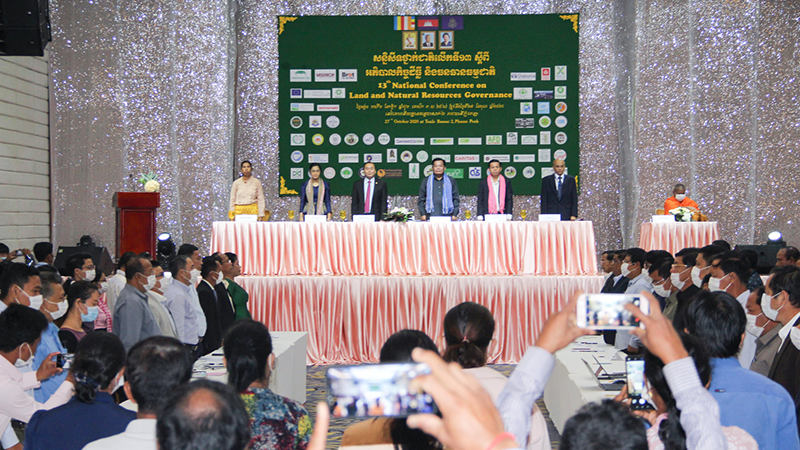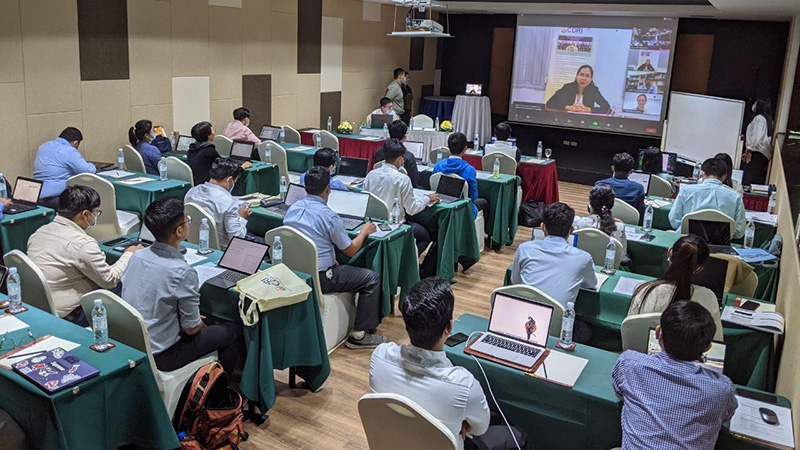
News
03 December 2024Navigating the Transition: Analysis of Electric Vehicle Policies and Tax Shifts in Cambodia
Navigating the Transition: Analysis of Electric Vehicle Policies and Tax Shifts in Cambodia
By Him Sinoun, Winner of the Writing Contest for the 2nd CDRI Regional Symposium 2024 on Digital and Green Economy in the Greater Mekong Subregion: Governance and Gender Inclusion
Cambodia’s push for a green economy relies on electric vehicles (EVs), supported by policies like the NDC and carbon neutrality strategy. However, recent tax hikes on EVs, based on horsepower, could deter adoption, undermining efforts to reduce emissions and promote sustainability.
The Cambodian government is strengthening its commitment towards a green economy with electric vehicles (EVs) playing an important role in this transformation. As part of this endeavour, many policies have been initiated and implemented including the Updated Nationally Determined Contribution (NDC), which aims to reduce CO2 emissions by 41.7 per cent before 2030.The Long-Term Strategy for Carbon Neutrality also plans to have 70 per cent of motorcycles, 40 per cent of cars, and all urban buses as electric by 2050.
Through these efforts, EV registrations have increased rapidly with a total number of 794, including 408 cars, 355 tricycles, and 31 motorcycles at the end of 2022. In addition, the government is enhancing its strategy to attract external EV car investors to increase the industry in the kingdom. These strategies include introducing key policies which significantly reduce the special duty on EVs from 30 per cent to 10 per cent.
This essay will delve further into existing and shifting tax policies for EV cars and the possible adoption of electric cars in Cambodia.
To endorse the transition towards EVs, there are a series of strategic policies to enhance sustainability, modernise the transportation sector, and reduce carbon emissions. These policies provide a comprehensive framework for EV adoption and infrastructure development. Firstly, the Roadmap of the Development of an Electric Vehicles Charging Stations Network in Cambodia is a cornerstone policy for EV infrastructure. It enhances the establishment of charging stations across the country to encourage more EV users. To support accessibility, the charging network includes cities, rural areas, and main highways, providing convenience and effectiveness for users.
Secondly, the National Policy on the Development of the Electric Sector 2024-2030 creates an environment for EVs growth. It includes strategies to support the domestic production of EVs, attract foreign investment and raise public awareness of EV usage. This policy will enhance research and development, preparing for technological advancements and economic development in the EV sector.
Thirdly, the Updated NDC reflects the Kingdom’s commitment to tackling climate change. Moreover, it promotes EVs as a cleaner approach to traditional internal combustion engine vehicles. The reform of the Road Traffic Law has also played an important role in supporting the adoption of electric vehicles that solve safety standards, operational guidelines, and improve the confidence among users and investors. Therefore, the mentioned policies describe Cambodia’s proactive approach to EV adoption, aimed at infrastructure development, sustainability, and regulatory support. The strategic policies implemented across Cambodia ensure that EVs are accessible, and it will eventually increase the number of users.
Despite the government initiatives promoting the green environment, the new prakas on transportation tax in November 2024 seem to discourage the public from electric cars. Previously varying between free to 150,000 riel (approx. US$ 37.50) annual charge on means of transportation, the newly released policy demands users to pay based on the horsepower (hp) of vehicles.
According to the recent prakas, new vehicles (under five years) that exceed 200 hp have to pay 500,000 riel (approx.. US$ 124.00) per year while those with over 250 hp have to pay approximately 1,200000 to 1,600000 riel (approx. US$ 300 – 400) annually. The amount was increased by 350,000 riel which is a 237.5 percent increase from the previous amount for 200 hp EVs. This scale of change is broadened for EVs with over 250 hp. The recent shifting tax policies for electric vehicles could pose concerns for users, suppliers, and investors.
On the demand side, firstly, this shift is negative for the current users who used to enjoy full tax benefits from using electric cars. Secondly, this switch will discourage people from using electric cars which could possibly lead to a decrease in demand for EVs. The current market for electric cars is still small even if its prices are more competitive. The new tax on the means of transportation for electric cars, which is close to diesel-fuelled cars, could impact the current market and possibly hinder the national policy on the development of the electric vehicle sector. This shift will also influence the electric car suppliers when the demand for electric cars is decreased.
In conclusion, increasing the use of electric vehicles is one of the goals to transition towards a green economy in Cambodia. The Roadmap of the Development of an Electric Vehicles Charging Station Network in Cambodia, the National Policy on the Development of the Electric Sector 2024-2030, and the Updated NDC are three guiding policies to enhance the feasibility of EV adoption in Cambodia.
By establishing better infrastructure, in accordance with the better road traffic law and reduction of import tariffs, it increases the accessibility leading to more EVs adopted. However, the recent shifts in tax policy, which increases the tax on means of transportation, may affect recent and future EV car users. Users will no longer enjoy the same benefits which may possibly affect the feasibility of EV car adoption in the future.
Disclaimer: The views expressed in this essay are those of the writer and do not necessarily reflect the views of the Cambodia Development Resource Institute (CDRI). The writer is responsible for any unintentional errors or mistakes.



